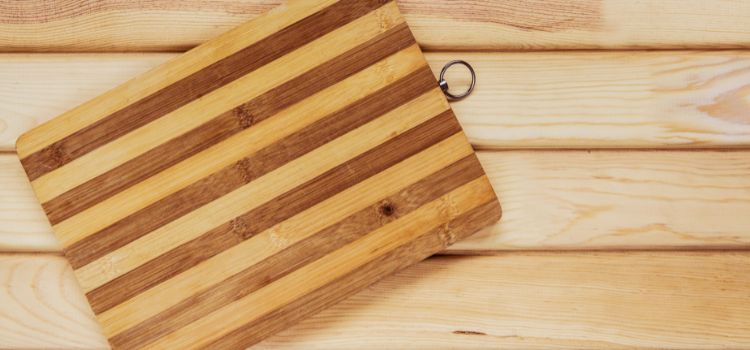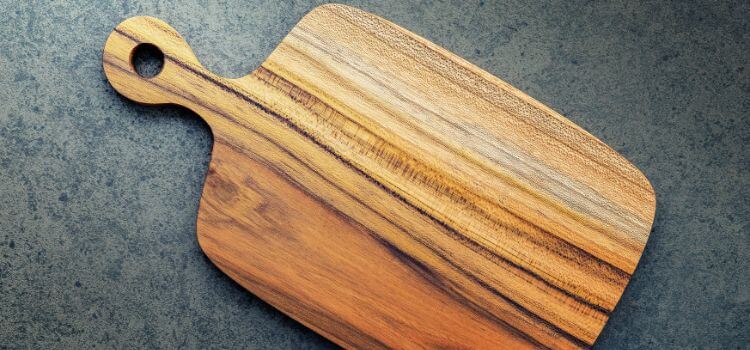As an Amazon Associate, I earn from qualifying purchases

In the bustling world of culinary arts, the humble cutting board plays a pivotal role, often overshadowed by flashier kitchen gadgets. Yet, for anyone who spends time crafting meals, the choice of cutting board can significantly affect both the cooking experience and the longevity of kitchen tools. Enter the end grain cutting board, a favorite among professional chefs and home cooks alike for its unique construction and benefits. But what exactly is an end grain cutting board?
End grain cutting boards are crafted from the end pieces of wood, showcasing the rings of the tree. Unlike other boards, where the knife cuts along the fibers, end grain boards present a surface where the knife edge goes between the wood fibers. This ingenious design not only enhances the board’s functionality but also adds to its aesthetic appeal.
In this article, we’ll delve deeper into the world of end grain cutting boards, exploring their benefits, differences from other types of boards, the materials used, maintenance tips, and how to select the right one for your kitchen.
Benefits of Using End Grain Cutting Boards
End grain cutting boards are revered for several compelling reasons:
- Durability: The construction of end grain boards inherently lends itself to greater durability. The wood fibers in end grain boards are oriented vertically, allowing them to absorb the impact of chopping and slicing without splitting. This makes them more resistant to wear and tear compared to their edge grain counterparts.
- Knife Friendliness: For those who cherish their knives, end grain boards are a game-changer. The vertical orientation of the grains means that knife edges stay sharper longer, as they are less likely to hit hard surfaces that can cause dulling.
- Self-Healing Properties: Perhaps the most fascinating aspect of end grain cutting boards is their self-healing ability. When a knife cuts into the board, the wood fibers separate and then close back up, reducing the visibility of cut marks and prolonging the life of the board.
Differences from Other Types of Cutting Boards
Understanding how end grain boards differ from other types can help in making an informed purchase:
- Edge Grain vs. End Grain: Edge grain boards are made by joining long strips of wood with the grain running parallel. While they are often less expensive, they tend to show knife marks more prominently and can dull knives faster than end grain boards. End grain boards, due to their construction, are thicker, heavier, and generally seen as a premium option.
- Plastic and Bamboo Alternatives: Plastic boards are lightweight and dishwasher safe, making them convenient but less durable and often harsher on knives. Bamboo, on the other hand, is a sustainable option but can be quite hard, potentially leading to quicker knife dulling. End grain boards strike a balance, offering both durability and knife protection.
Materials Commonly Used
End grain cutting boards are typically crafted from hardwoods, which enhance their performance and longevity:
- Hardwoods: Common choices include maple, walnut, and cherry, each offering different aesthetics and levels of hardness. Maple is a popular choice for its hardness and tight grain, walnut for its rich color, and cherry for its warm hues.
- Sustainability: As an increasing number of consumers seek eco-friendly options, sustainably sourced woods or reclaimed materials are becoming popular in end grain board production. Choosing these options supports responsible forestry practices and can add a unique character to your board.
Maintenance Tips
Proper care is essential to maintain the integrity and appearance of an end grain cutting board:
- Cleaning: After each use, clean the board with mild soap and warm water, avoiding soaking or using harsh detergents that can dry out the wood. Thorough drying is crucial to prevent warping or cracking.
- Oiling and Conditioning: Regular oiling is a must for end grain boards to stay in top condition. Use a food-safe mineral oil or a dedicated cutting board conditioner to maintain its moisture barrier. Apply generously, allowing the oil to soak in overnight for maximum absorption.
- Storage Advice: Store your end grain board in a well-ventilated area, away from direct sunlight and heat sources. Standing it on its side can help prevent moisture buildup and warping.
Choosing the Right End Grain Cutting Board

Selecting the perfect end grain cutting board involves balancing various factors:
- Size and Thickness Considerations: Consider the size of your kitchen and the types of tasks you’ll be performing. A large board offers more working space but requires ample storage, while a thicker board provides additional stability.
- Budget and Quality: Quality end grain boards can be an investment. Consider your budget and look for boards that offer solid construction, durable glue joints, and a smooth finish. Sometimes, paying a bit more upfront can save money in the long run due to increased longevity.
- Aesthetic Preferences: The beauty of end grain boards is in their unique patterns and colors. Choose a board that complements your kitchen decor and appeals to your personal style, whether you prefer the light tones of maple, the deep richness of walnut, or the warm glow of cherry.
Conclusion
End grain cutting boards are more than just tools; they are an investment in your culinary journey. Their durability, knife-friendly nature, and self-healing properties make them a preferred choice for those who take cooking seriously. While they require more maintenance than some alternatives, the benefits they offer in terms of longevity and performance make them worth the effort.
When selecting an end grain cutting board, consider your cooking habits, stylistic preferences, and budget. Whether you’re a professional chef or a home cook, an end grain board can enhance your kitchen experience, making meal preparation more enjoyable and efficient. In the long run, its blend of functionality and beauty ensures it will be an indispensable, and attractive, part of your kitchen toolkit.
FAQ
Is end grain better for cutting board?
Yes, end grain cutting boards are often preferred for their durability and knife-friendliness. The vertical wood fibers allow knives to cut between them, keeping blades sharper and providing a self-healing surface that minimizes visible cut marks, making them ideal for frequent use.
How do I know if my cutting board is end grain?
An end grain cutting board displays the wood’s rings in a checkerboard pattern on its surface. This construction allows the fibers to face upward, providing a distinct look and softer feel compared to edge grain boards, where fibers run parallel to the surface.
What is end grain on a board?
End grain refers to the surface of a cutting board that is made from the ends of wood pieces. This orientation showcases the tree rings and allows the fibers to absorb knife impacts more effectively, offering durability and maintaining sharpness of knife blades.
What’s the difference between edge grain and end grain?
Edge grain boards are made from parallel wood strips, offering a harder surface and typically lower cost. End grain boards, constructed from the ends of wood pieces, provide a softer, self-healing surface that’s gentler on knives and shows less wear over time.
As an Amazon Associate, I earn from qualifying purchases